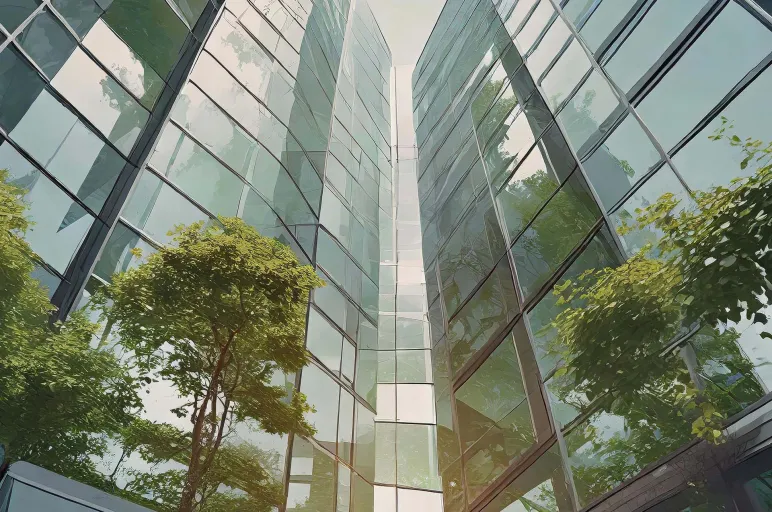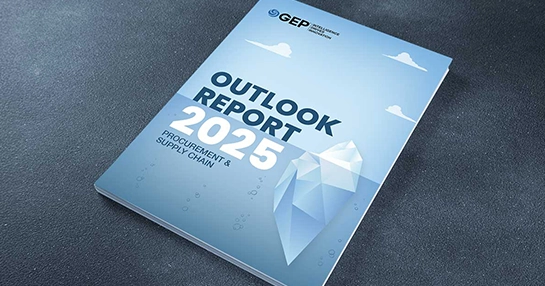
LEED Makes Procurement Central to Sustainability in Real Estate
- LEED marks 25 years as the benchmark for sustainable buildings.
- Procurement plays a defining role in meeting LEED certification goals.
- LEED-certified projects reduce resource use and improve asset performance.
June 20, 2025 | Procurement Strategy 4 minutes read
The real estate industry faces growing pressure to cut emissions and meet global climate targets. Sustainability has thus become a strategic priority, not just an optional goal.
Central to this shift is Leadership in Energy and Environmental Design or LEED, a globally recognized certification developed by the U.S. Green Building Council, now in its 25th year.
As of 2024, more than 197,000 projects in 186 countries were LEED certified, covering roughly 29 billion square feet worldwide.
Yet LEED does more than recognize sustainability. It helps real estate teams run buildings more efficiently and encourages responsible procurement decisions.
LEED: A Framework for Smarter, Greener Buildings
LEED provides a structured approach to sustainability across design, construction, and operations. Its criteria cover everything from energy use, water efficiency, and material selection to indoor environmental quality and waste reduction.
Buildings that achieve LEED certification are proven to perform better.
On average, they consume 25% less energy, use 11% less water, and divert over 50% of construction waste from landfills. These efficiencies translate directly into lower operating costs, improved asset performance, and a reduced environmental footprint.
In addition, LEED-certified spaces are healthier for occupants. Enhanced ventilation, daylight access, and material choices contribute to a better indoor environment, supporting Sustainable Development Goal 3 (Good Health and Well-being) and driving productivity gains of up to 20%.
Talk to Our Expert
LEED and the SDGs: Aligning with Global Goals
LEED doesn't exist in a vacuum. It aligns with the UN Sustainable Development Goals (SDGs). Each LEED-certified project/building contributes to below global priorities:
- SDG 7 (Affordable and Clean Energy): Lower energy demand and integration of renewables
- SDG 6 (Clean Water and Sanitation): Efficient water use and metering
- SDG 12 (Responsible Consumption and Production): Sustainable material sourcing and waste management
- SDG 11 (Sustainable Cities and Communities): Encouraging smarter, resilient urban infrastructure
- SDG 15 (Life on Land): Minimizing ecological disruption through responsible site development
This synergy between LEED and SDGs helps real estate and facilities management (REFM) leaders not only meet ESG commitments but also create measurable impact on a global scale.
LEED in Construction and Design: Where Efficiency Begins
The benefits of LEED start with design.
Integrating LEED goals at the concept stage ensures that buildings are designed for performance, not just compliance. Architects and engineers can optimize site orientation, use strategies like natural ventilation and daylighting, and prioritize materials that support both performance and wellness.
During construction, LEED drives smart decisions -- from sourcing regionally manufactured and low-emission materials to setting up site-level waste diversion plans.
Technologies like Building Information Modeling (BIM) also play a role by simulating energy use and helping teams track LEED credits across the project lifecycle.
Importantly, LEED-certified projects are commissioned rigorously, ensuring HVAC and lighting systems work as designed, which significantly reduces energy drift over time -- a common cause of inefficiency in buildings.
The Role of Procurement in LEED
Procurement is a critical, often underestimated, piece of the LEED puzzle.
The right procurement strategy can directly influence a project’s ability to achieve certification and long-term performance.
Firstly, procurement teams play a role in specifying LEED compliant requirements -- from materials with Environmental Product Declarations (EPDs) to energy-efficient systems that meet LEED prerequisites.
Partner selection becomes vital: choosing architects, consultants, and contractors experienced in delivering LEED projects ensures that sustainability goals are met without compromise.
Secondly, strategic procurement can help define sustainability charters that set the tone for entire real estate portfolios. By setting clear expectations like requiring LEED Gold minimum for new builds or mandating lifecycle carbon assessments, organizations shape market behavior and raise the bar for partner organizations.
Lastly, procurement can act as a facilitator—onboarding the right vendors, supporting product innovation, and collaborating with suppliers to deliver high-performing, future-ready spaces.
For example, in India, LEED is shaping how sustainability works at scale. India has 73 of the 160+ global LEED Zero certifications, representing 45% of all certified projects—surpassing the U.S. (30%) and China (10%).
LEED Zero recognizes projects that achieve net-zero or net-positive status in energy, carbon, water, or waste.
Why Certifications Like LEED Matter for REFM
For REFM professionals, building certifications serve a dual purpose. They support ESG goals while also guiding more efficient building operations.
• Cost savings
LEED buildings often reduce utility costs by 20–30%.
• Occupant satisfaction
Healthier spaces lead to better employee engagement and retention.
• Asset value
Green-certified buildings see higher rents and longer lease terms.
• Compliance readiness
LEED aligns with future climate and energy regulations.
• Portfolio performance
Helps standardize and benchmark efficiency across diverse assets.
As regulatory environments tighten and investor scrutiny on ESG increases, building certifications provide transparency, credibility, and long-term value.
25 Years of LEED: Evolving for the Future
The year 2025 marks the 25th anniversary of the LEED rating system. Over the past two decades, LEED has evolved to meet the needs of a changing world. The upcoming LEED v5, expected to launch later this year, will place greater emphasis on carbon reduction, equity, and climate resilience; reflecting feedback from global stakeholders and the urgency of the climate crisis.
The Way Forward
Sustainability and efficiency are now moving in step. LEED gives real estate and facilities leaders a structured path to achieve both, while also supporting global commitments like the SDGs.
More than certification, LEED serves as a practical guide across design, construction, procurement, and operations.
Authors: Hridyanshi Dave and Shilky Gupta



